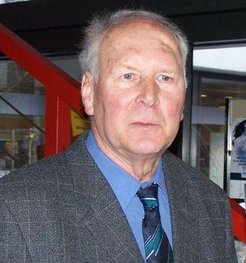Dr. Helmut Rosenbauer
Obituary for the long-standing Director of the MPAe

Dr. Helmut Rosenbauer, a longstanding director at the Max Planck Institute for Aeronomy (MPAe) in Katlenburg-Lindau, died on 5th May 2016 at the age of 79. He was appointed Scientific Member of the Max Planck Society in 1977 and was director at MPAe (now Max Planck Institute for Solar System Research in Göttingen) from then until 2004.
With Helmut Rosenbauer we have lost an outstanding scientist, who played a key role in setting up and shaping countless space missions investigating the Earth’s magnetosphere, solar wind, planets and comets. In particular he was an excellent, internationally renowned experimenter who had a unique understanding for how to conceptualize, develop and build instruments for scientific space missions.
Helmut Rosenbauer was born in 1936 in Nuremberg. He studied electronics at the Technical University of Munich and went on to do his PhD in plasma physics there, graduating as a Doctor of Engineering. In 1967 he had already started working as a scientist in space research at the Max Planck Institute for Extraterrestrial Physics in Garching. He developed instruments with his group to measure solar wind and low energy ions and electrons in the Earth’s magnetosphere. With these instruments he took part in significant space missions such as HEOS A-2 and Helios 1/2. In 1977 the Max Planck Society appointed him Scientific Member and director at MPAe, where he became head of his own department for experimental planetary research in 1991. In 2004 he was awarded emeritus status as director of MPAe.
As director at MPAe he significantly increased the institute’s participation in international space missions. Under his direction MPAe did not just partake in ESA and NASA missions but was also successfully working with Soviet space researchers in the 1980’s. He was the leader of several important research projects, providing major contributions to the space missions Ulysses, Giotto, Phobos, Mars 96 and Rosetta among others.
The successes of the projects led by Helmut Rosenbauer are largely thanks to his perseverance, his inexhaustible wealth of ideas and his tireless commitment. He boldly tackled the “impossible”. He demanded and expected a lot from his teams, yet always set a good example. He did not hesitate to take the soldering iron himself or sometimes finish the important parts on the lathe there and then. His colleagues, who worked with him through the most difficult situations, held him in high regard and affectionately called him “chief”.
His last big success was the ESA Rosetta mission to the comet 67P/Churyumov-Gerasimenko. He was responsible for the conception and the scientific program of the lander Philae, which landed on the comet’s nucleus under spectacular circumstances in 2014, and for one of the most important instruments on board Philae. Without his commitment and technical ingenuity Philae would never have flown.
On 5th May 2016 Dr. Helmut Rosenbauer died after a long-term illness. We mourn an excellent and imaginative researcher, a judicious institute director, an encouraging boss and a good friend.
